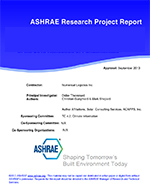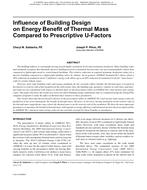Addresses a method of reducing nitrogen oxide (NOx) emissions from commercial and industrial fire-tube gas- and oil-fired boilers operating with higher static pressure burners. For boilers in this class, internal or external flue gas recirculation is a popular NOx reduction strategy. The main disadvantages are high costs, due to the introduction of redesigned burners and external gas recirculation equipment and increased complexity of operation and control. Coordinated design of the combustion chamber is another tool that can be used to affect the NOx emissions. The approach of increasing flame cooling by simple mechanical means has been evaluated. Tests showed that this approach can reduce NOx emissions up to 40% with gas and oil firing. Additionally, these changes in the combustion chamber increased the thermal efficiency of the boiler over the entire load range and especially at reduced loads, leading to significant annual fuel savings.
KEYWORDS: year 1997, Nitrogen oxides, gas fired boilers, oil fired boilers, boilers, flue gases, fire tube boilers, designing, combustion chambers, testing, efficiency, air pollution limitation, commercial, industrial
Citation: Symposium, ASHRAE Trans. 1997, vol.103, part 1
Product Details
- Published:
- 1997
- File Size:
- 1 file , 800 KB
- Product Code(s):
- D-16489


